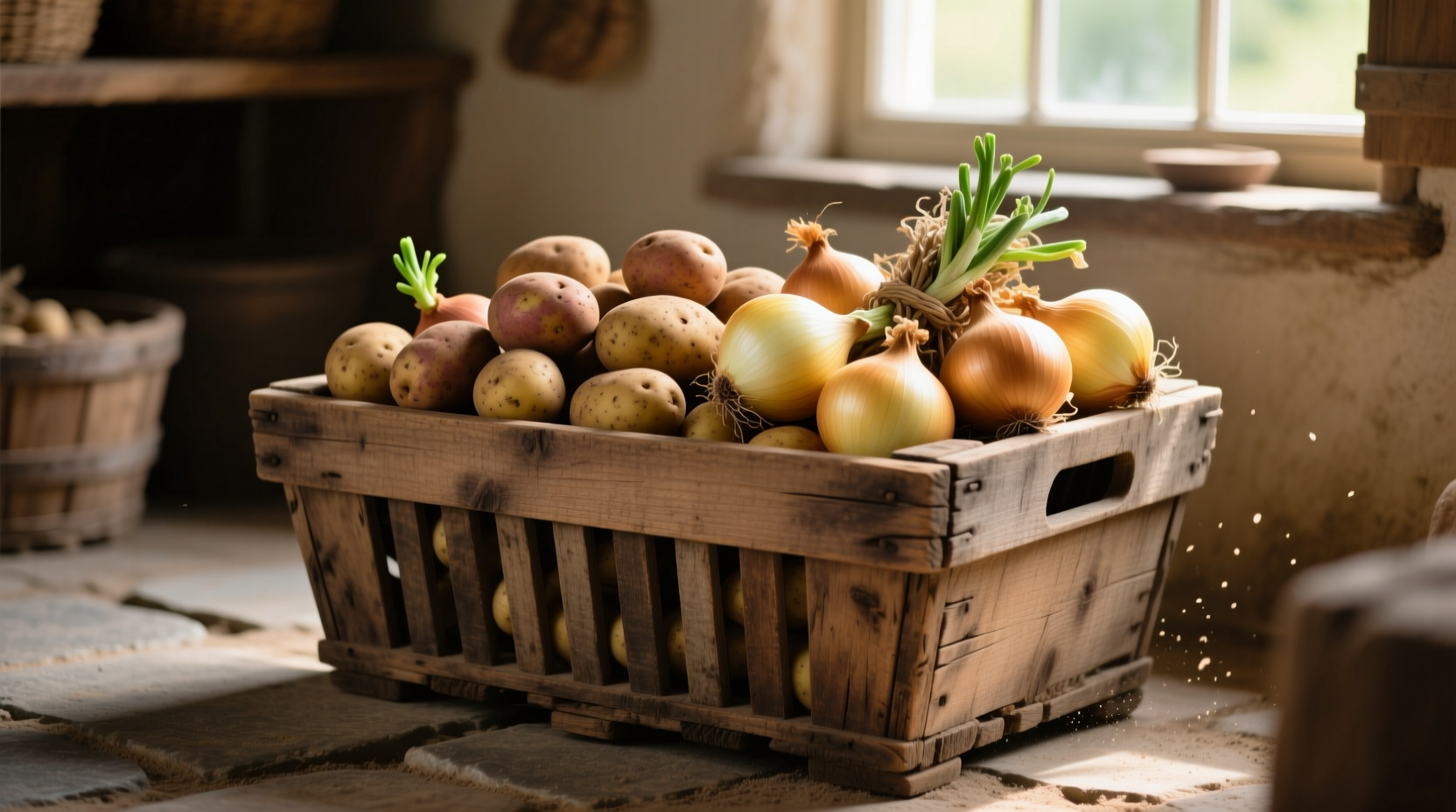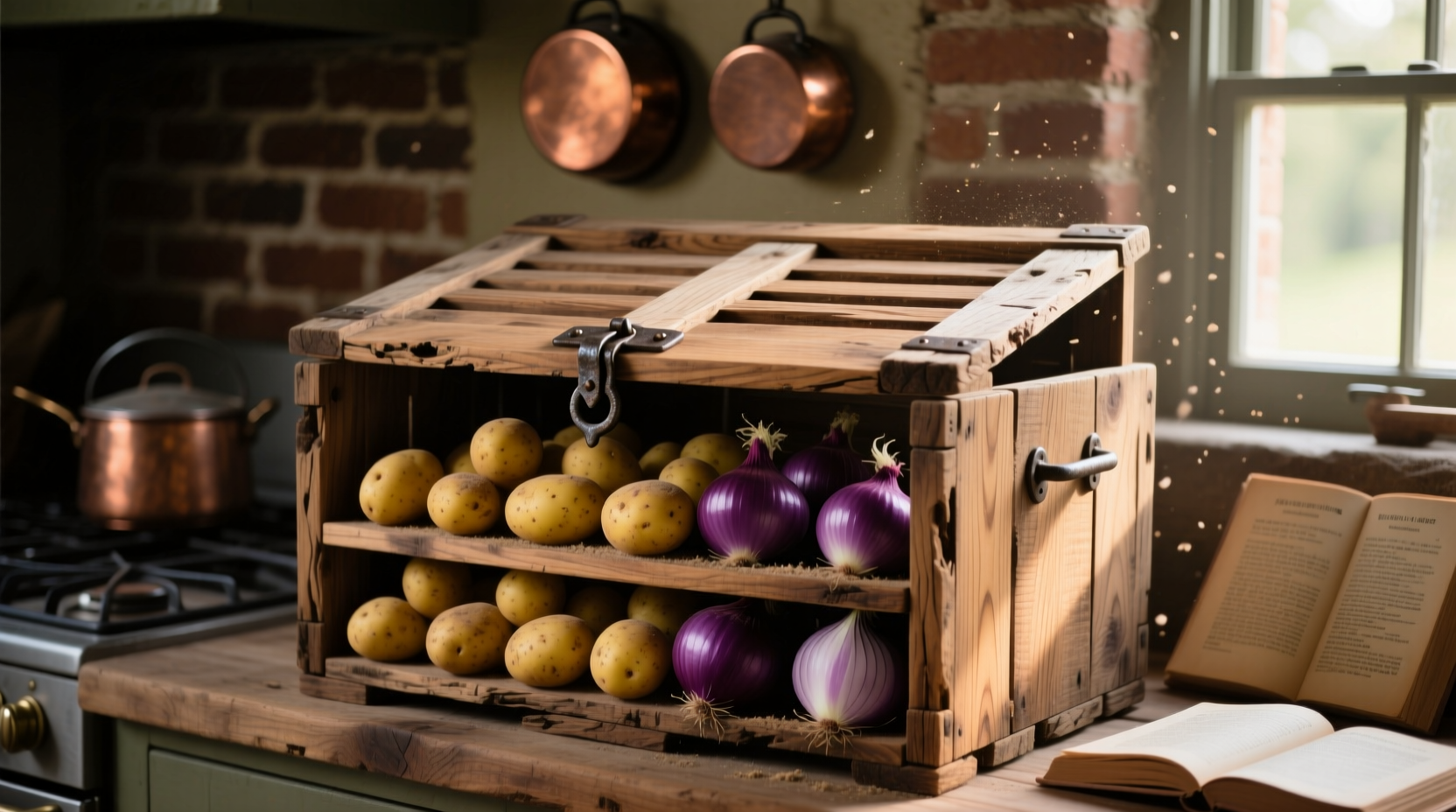Why Proper Storage Matters for Potatoes and Onions
Most households waste 30-40% of their potato and onion harvest due to improper storage. These staple vegetables have specific environmental requirements that, when met, can double their shelf life. Understanding their biological needs is the first step to reducing food waste and maximizing your grocery investment.

The Science Behind Potato and Onion Storage
Potatoes and onions continue to respire after harvest, making proper storage conditions critical for longevity. Contrary to popular belief, refrigeration actually reduces the shelf life of both vegetables through cold-induced sweetening in potatoes and excess moisture causing onions to rot. The ideal storage solution addresses their different environmental needs while preventing the negative interactions that occur when stored together.
| Vegetable | Ideal Temperature | Ideal Humidity | Shelf Life (Proper Storage) | Common Storage Mistake |
|---|---|---|---|---|
| Potatoes | 45-55°F (7-13°C) | 90-95% | 2-6 months | Storing in refrigerator (causes sweetening) |
| Onions | 32-45°F (0-7°C) | 65-70% | 1-2 months (up to 6 months for storage varieties) | Storing with potatoes (moisture causes rot) |
Why Potatoes and Onions Shouldn't Be Stored Together
One of the most common storage mistakes is keeping potatoes and onions in the same container. Potatoes release moisture and ethylene gas as they age, which accelerates sprouting in potatoes and causes onions to become soft and rot. The USDA Agricultural Research Service confirms that storing these vegetables separately extends their shelf life by up to 50% (USDA ARS, 2023).
Key Features of an Ideal Storage Bin
Not all storage containers deliver optimal results. The best potato onion storage solutions share these critical characteristics:
- Ventilation: Multiple airflow channels to prevent moisture buildup
- Darkness: Opaque material or design that blocks light (prevents greening in potatoes)
- Separate Compartments: Dividers or separate bins for potatoes and onions
- Breathable Material: Natural fibers like wicker, bamboo, or untreated wood
- Elevated Base: Prevents contact with cold floors that can cause chilling injury
Storage Timeline: What Happens When Conditions Aren't Ideal
Understanding the degradation process helps identify problems early. Here's what happens when storage conditions aren't optimal:
| Timeframe | Potatoes (Poor Storage) | Onions (Poor Storage) |
|---|---|---|
| 1-2 weeks | Skin begins to wrinkle, slight softening | Neck area becomes soft, outer skin loses crispness |
| 3-4 weeks | Sprouting begins, increased sweetness | Mold appears at neck, strong odor develops |
| 6-8 weeks | Significant sprouting, soft spots, potential rot | Complete softening, unusable |
DIY Storage Solutions That Actually Work
You don't need to purchase a specialized bin to store potatoes and onions properly. These budget-friendly alternatives work effectively:
For Potatoes:
- Cardboard Box Method: Line a cardboard box with newspaper, add potatoes, cover with more newspaper, and store in a cool, dark place
- Cloth Bag System: Use breathable cotton or linen bags hung in a pantry away from heat sources
For Onions:
- Mesh Bag Hanging: Hang onions in mesh bags in a cool, dry basement or pantry
- Stringing Technique: Traditional method of threading onions onto string and hanging them
When Standard Storage Methods Fail: Context Boundaries
Not all environments are suitable for traditional storage methods. Understanding these context boundaries will help you adapt:
- Humid Climates: In areas with high humidity (above 75%), onions require additional drying time before storage. The University of California Cooperative Extension recommends curing onions for 2-3 weeks in a well-ventilated area before long-term storage (UCCE, 2022)
- Small Living Spaces: Apartment dwellers without basements can use specialized countertop storage bins with ventilation channels and dark interiors
- Seasonal Changes: During summer months when home temperatures exceed 70°F (21°C), consider storing only small quantities for immediate use
Troubleshooting Common Storage Problems
Even with the best storage bin, issues can arise. Here's how to address them:
Potatoes Starting to Sprout
Remove sprouted potatoes immediately to prevent them from affecting others. If only a few have sprouted, the rest are likely still good. Never eat potatoes that have turned green, as they contain solanine, a toxic compound.
Onions Becoming Soft or Moldy
This typically indicates excess moisture. Separate affected onions immediately and increase ventilation. Consider adding silica gel packets (food-safe) to absorb excess moisture in the storage container.
Seasonal Storage Adjustments
Your storage approach should change with the seasons:
- Spring/Summer: Store smaller quantities as room temperatures rise. Consider refrigerating potatoes only if using within 1-2 weeks
- Fall/Winter: This is prime storage time when ambient temperatures naturally fall into the ideal range
Final Recommendations for Long-Term Storage
For maximum shelf life of both potatoes and onions:
- Store in separate, ventilated containers
- Maintain temperatures between 45-55°F (7-13°C)
- Keep humidity at 65-75% for onions, 90-95% for potatoes
- Check contents weekly and remove any showing signs of spoilage
- Avoid storing near heat sources like appliances or heating vents











 浙公网安备
33010002000092号
浙公网安备
33010002000092号 浙B2-20120091-4
浙B2-20120091-4